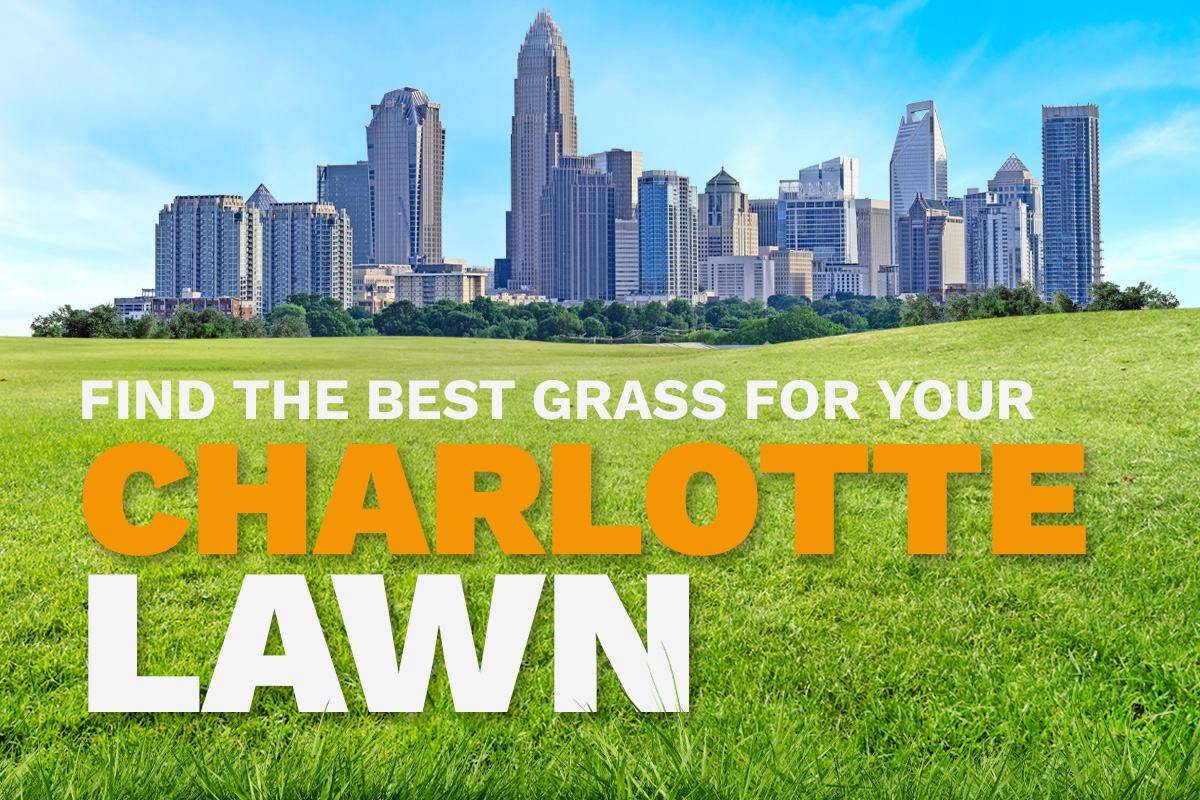
Charlotte sits in the transition zone where cool-season grasses struggle in summer and warm-season ones go brown in winter. While tall fescue is the most popular choice, yards with heavy foot traffic or lots of sun exposure may benefit from a Bermudagrass lawn or other warm-season choice.
Read on to see which type fits your yard best.
What Grass is Best For You?
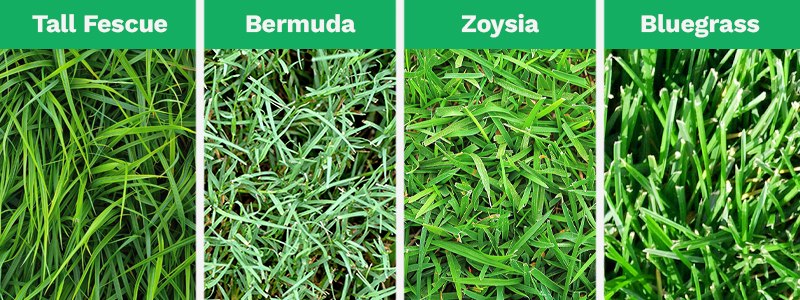
What’s the best grass type for your Charlotte lawn? Whether you’re as far south as Ballantyne or up north in University City, you’ll need grass that can handle heat, shade, foot traffic, and our compact, acidic Piedmont soil. Plug in your yard’s traits below, and we’ll tell you the grass type you should consider.
🌱 Grass Match Calculator for Charlotte
Find the perfect grass for your Charlotte-area lawn
🌱 Your Top 3 Grass Recommendations
Based on your specific preferences
1. Tall Fescue

Tall Fescue’s cool-season durability and shade tolerance make it Charlotte’s go-to grass. Roughly 80% of all Charlotte lawns are Tall Fescue.
Its popularity owes to the fact that this grass stays green through our winters and thrives from spring through fall. The deep roots it grows help it handle the summer heat and drought better than most cool-season types.
In my neighborhood — like many across Charlotte — Tall Fescue dominates. With some watering during the hotter months (late June through August) and a bit of fall overseeding with more fescue to patch up bare spots, your lawn will stay more green than brown all year-round.
Overseed Tall Fescue in the fall to keep your lawn thick and healthy. It responds well to core aeration and fertilization in September. If your soil’s too acidic, a light sprinkle of lime can help keep your Tall Fescue healthy and green. Edge often to keep pesky crabgrass at bay.
Charlotte Pro Tip (from Jarryd Lambert of Right Angle Lawn Care): “The most critical time of year for this grass is during summer…water deep and infrequently and make sure you have a good fungicide applied to help prevent brown patch in the summer.”
- Sun tolerance: Full sun to partial shade
- Drought resistance: Moderate
- Establishment: Fast germination, DIY-friendly via seed
- Mowing height: 3 to 3.5 inches; remove no more than 1/3 blade length
- Foot traffic: High, though overseeding is needed to fill bare spots
- Disease risk: Moderate; prone to brown patch in hot, humid weather if overwatered or overfertilized.
- See Related:
- Tall Fescue Lawn Maintenance Guide
- How to Fertilize Your North Carolina Lawn
- How to Fix Dry Patches on Your Lawn
2. Bermudagrass
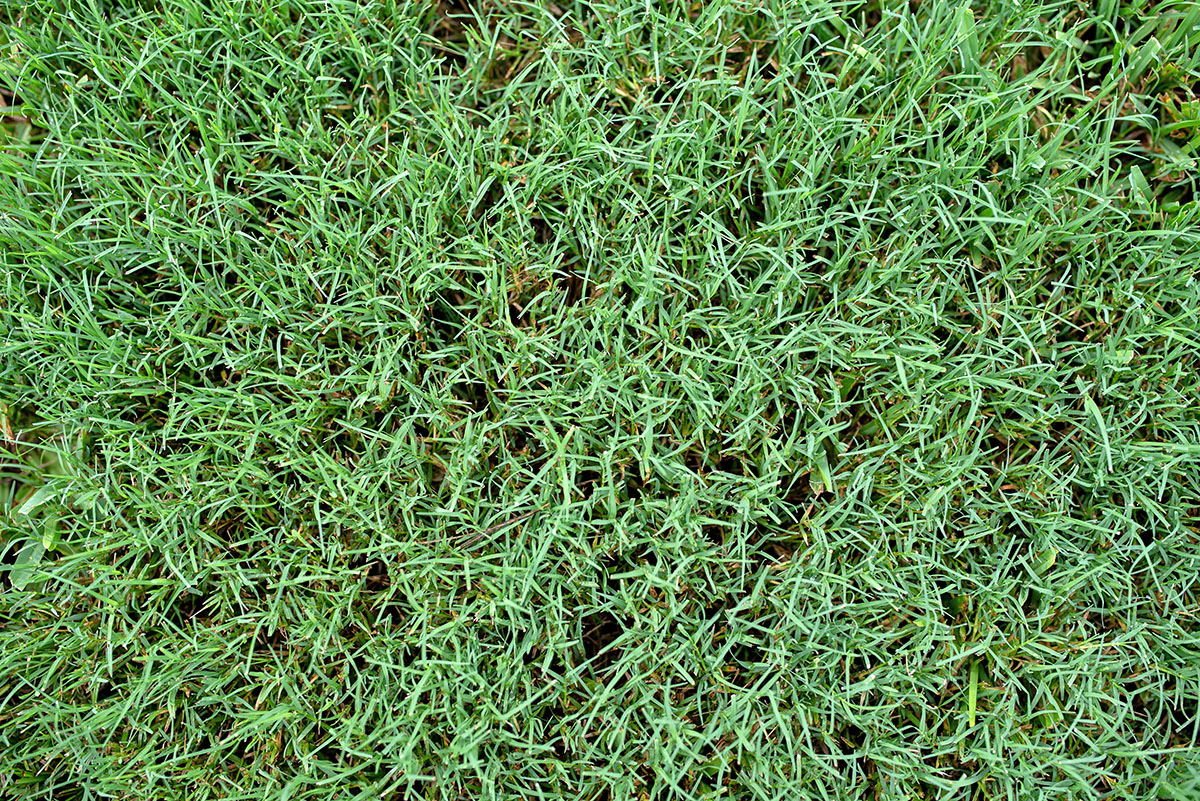
Bermudagrass thrives in Charlotte’s sun-drenched yards, grows well in a variety of soils, and bounces back quickly from heavy foot traffic. It greens up beautifully in the heat and holds its color until the first frost.
This grass type is Charlotte’s second most popular grass and holds “court” in about 15% of Queen City lawns. Many HOA golf courses, including mine, use Bermudagrass for that stunning green look all summer long.
Like most warm-season grasses, Bermuda turns to a dry, dull brown in winter (late October through late March). Overseeding with Ryegrass can keep your Bermuda lawn green from November to April.
Keep Bermudagrass short. Mow frequently in summer and fertilize every four to six weeks to get your own golf-course look. Fertilize every four to six weeks during the active season. Be prepared to edge often to keep it out of garden beds, as Bermuda spreads aggressively.
- Sun tolerance: Full sun only
- Drought resistance: High
- Establishment: Seed, sod, or sprigs
- Mowing height: 1.5 to 2 inches
- Foot traffic tolerance: Very high
- Disease risk: Low; fairly disease-resistant but may encounter dollar spot or spring dead spot in poorly managed lawns.
See Related:
3. Zoysiagrass
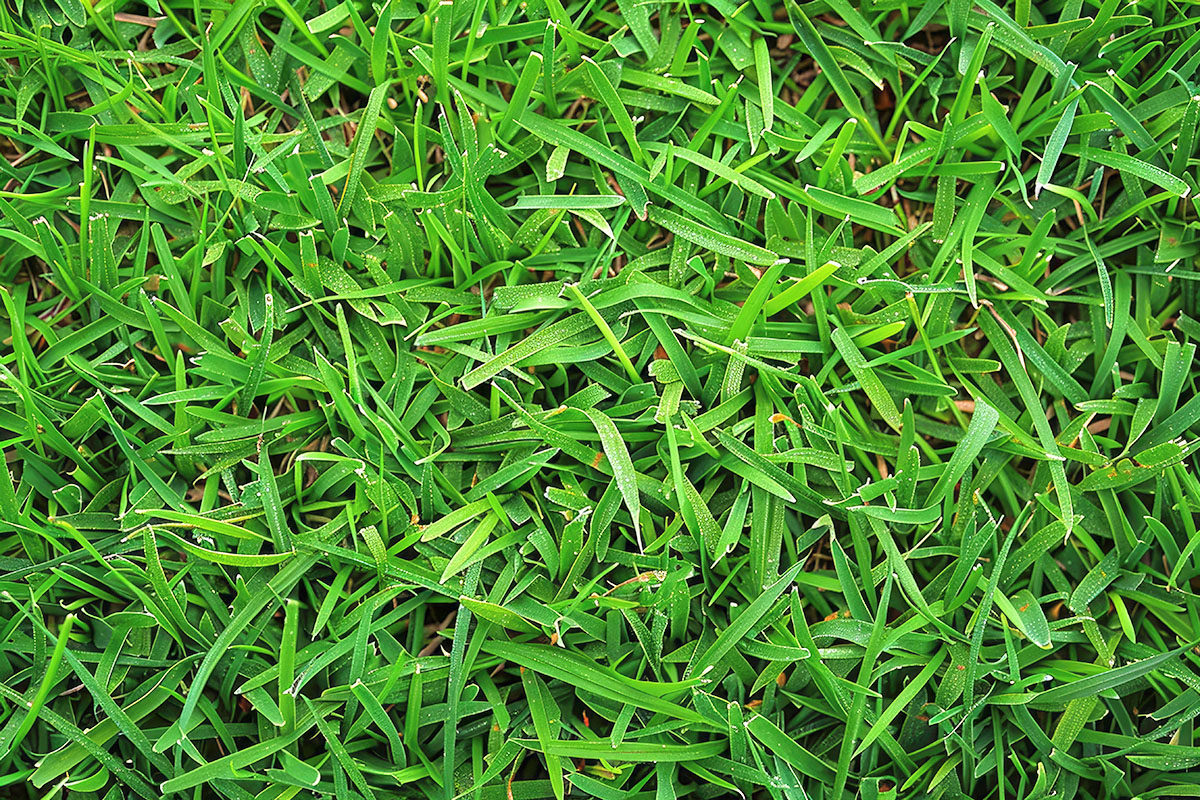
Warm-season and shade-tolerant, to an extent, Zoysia forms lush, dense turf that naturally crowds out weeds. It handles our Carolina heat and moderate shade well, making it a strong choice for landscaped yards that offer tree cover.
Zoysia is planted in about 5% of area lawns and is ideal for Charlotte homeowners who want curb appeal without constant mowing. Once this type is established, it’s a low-maintenance grower.
Growing Zoysiagrass requires patience as it can take one to three seasons to fill in, especially if you start it from plugs. Mow every one to two weeks in peak season. Use a reel mower to get the best “fresh cut” look. Dethatch periodically to keep vibrant.
- Sun tolerance: Full sun to light shade (4–6 hrs/day)
- Drought resistance: Moderate to high
- Establishment: Sod or plugs recommended
- Mowing height: 1 to 2 inches
- Foot traffic: High, though slow to repair
- Disease risk: Low to moderate; generally resistant but can develop large patch and rust in wet or humid conditions.
See Related:
4. Kentucky Bluegrass

As a cool-season variety, Pure Kentucky bluegrass is more common up north, but it can still hold its own in a Charlotte lawn, especially when blended with at least 5% to 10% Tall Fescue. Mixing adds texture, deepens the color, and boosts its natural self-repairing ability.
Look for bluegrass/fescue/fine fescue blends at the store. While it’s not as drought-tolerant or as popular as other options, Kentucky bluegrass stands out for its especially lush, soft feel underfoot.
To beat the heat, try planting newer, heat‑tolerant cultivars, like America, Apollo, or a Texas bluegrass/Kentucky hybrid. Fertilize and irrigate regularly during the hot summer months.
- Sun tolerance: Full sun
- Drought resistance: Low to moderate
- Establishment: Seed or sod
- Mowing height: 2.5 to 3 inches
- Foot traffic tolerance: Moderate, less so in the summer
- Disease risk: Moderate to high; susceptible to leaf spot, stripe smut, and summer patch, especially in heat and humidity.
See Related:
Comparing the Best Charlotte Grasses
A great way to find your best grass fit is by weighing the pros and cons of each type. Use the chart below to see what each grass does well and where it falls short, so you can choose the best option for your Charlotte lawn.
| Tall Fescue | |
| Pros: — Shade tolerant — Stays green in winter — Deep roots handle heat/drought — High foot traffic tolerance | Pros: — Shade-tolerant — Stays green in winter — Deep roots handle heat/drought — High foot traffic tolerance |
| Bermudagrass | |
| Pros: — Thrives in full sun — Drought-tolerant — Recovers fast from wear — Great for active lawns, golfing | Cons: Low shade tolerance — Fast growth, needs frequent mowing — Can spread aggressively |
| Zoysiagrass | |
| Pros: — Dense and weed-resistant — Moderate shade tolerance — Soft texture — Low mowing frequency | Cons: — Slow to establish — Turns brown in drought — Needs dethatching — Slow to recover from damage |
| Kentucky Bluegrass | |
| Pros: — Lush and soft — Blends well with fescue — Self-repairing in mixes — Good cold tolerance | Cons: — Not very drought-tolerant — Struggles in extreme heat — Moderate traffic recovery — Not as popular as other types |
LawnStarter Can Help With All Your Lawn Care Needs
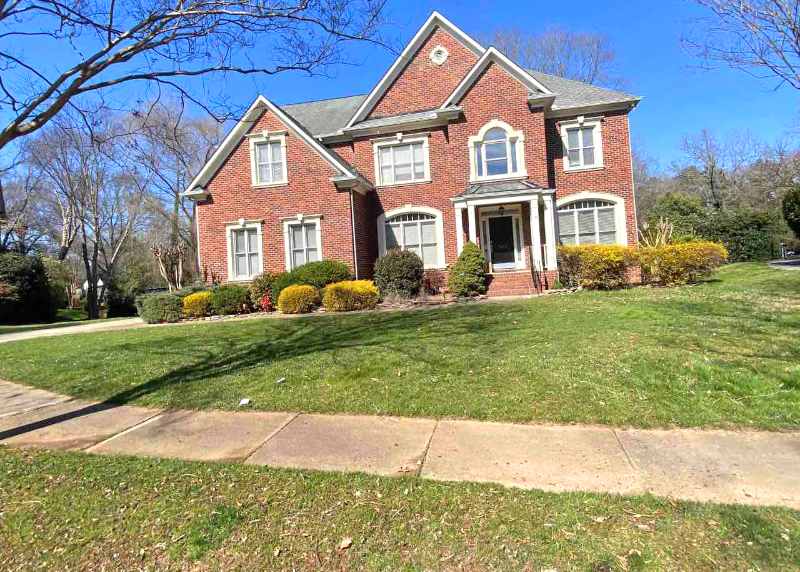
Once you’ve selected the right grass, the real test is maintenance. That’s where LawnStarter’s Charlotte-area pros come in. They handle everything from mowing and edging to leaf removal and seasonal prep, so you can take time to relax while your lawn stays healthy and clean.
Lawnstarter experts serve homeowners across the Charlotte metro area, including Concord, Matthews, Huntersville, and more. Book a pro with a tap in our app, online, or by phone to keep your yard clean and pristine all year long.
Main Image: Illustration by Whitney Lehnecker / LawnStarter; Adobe Stock photos